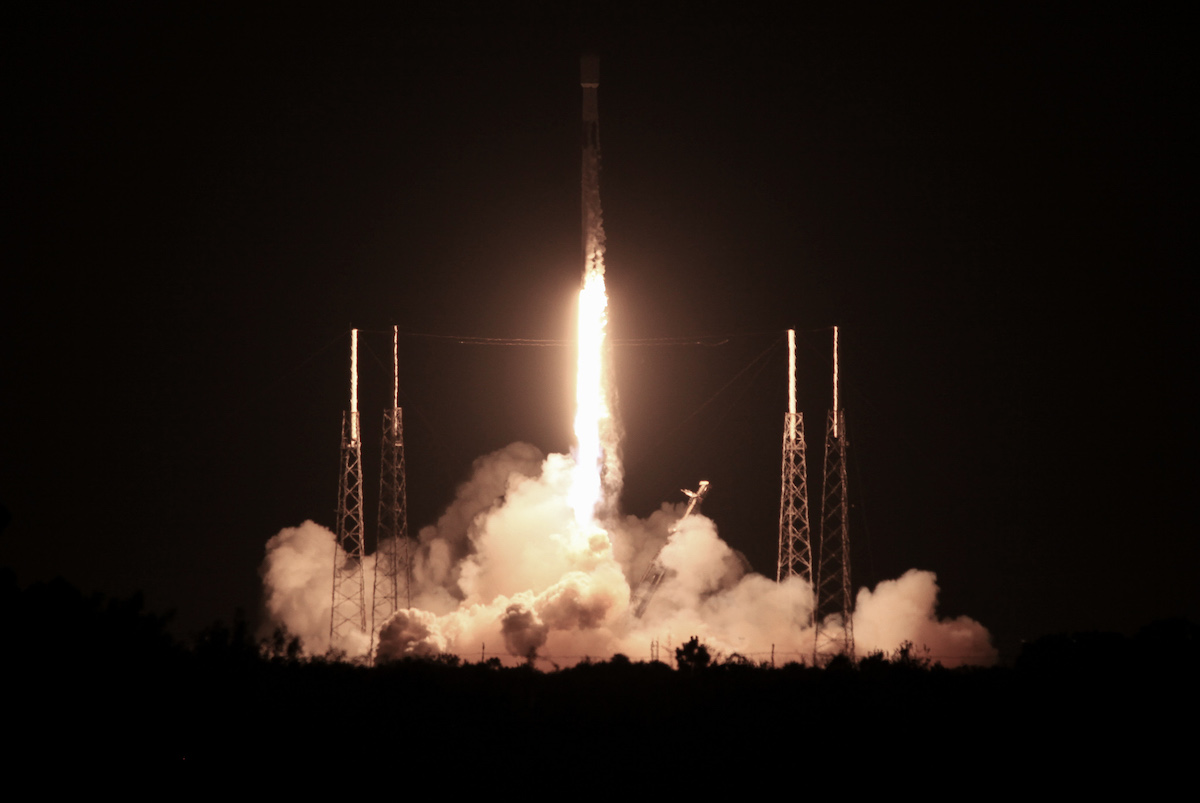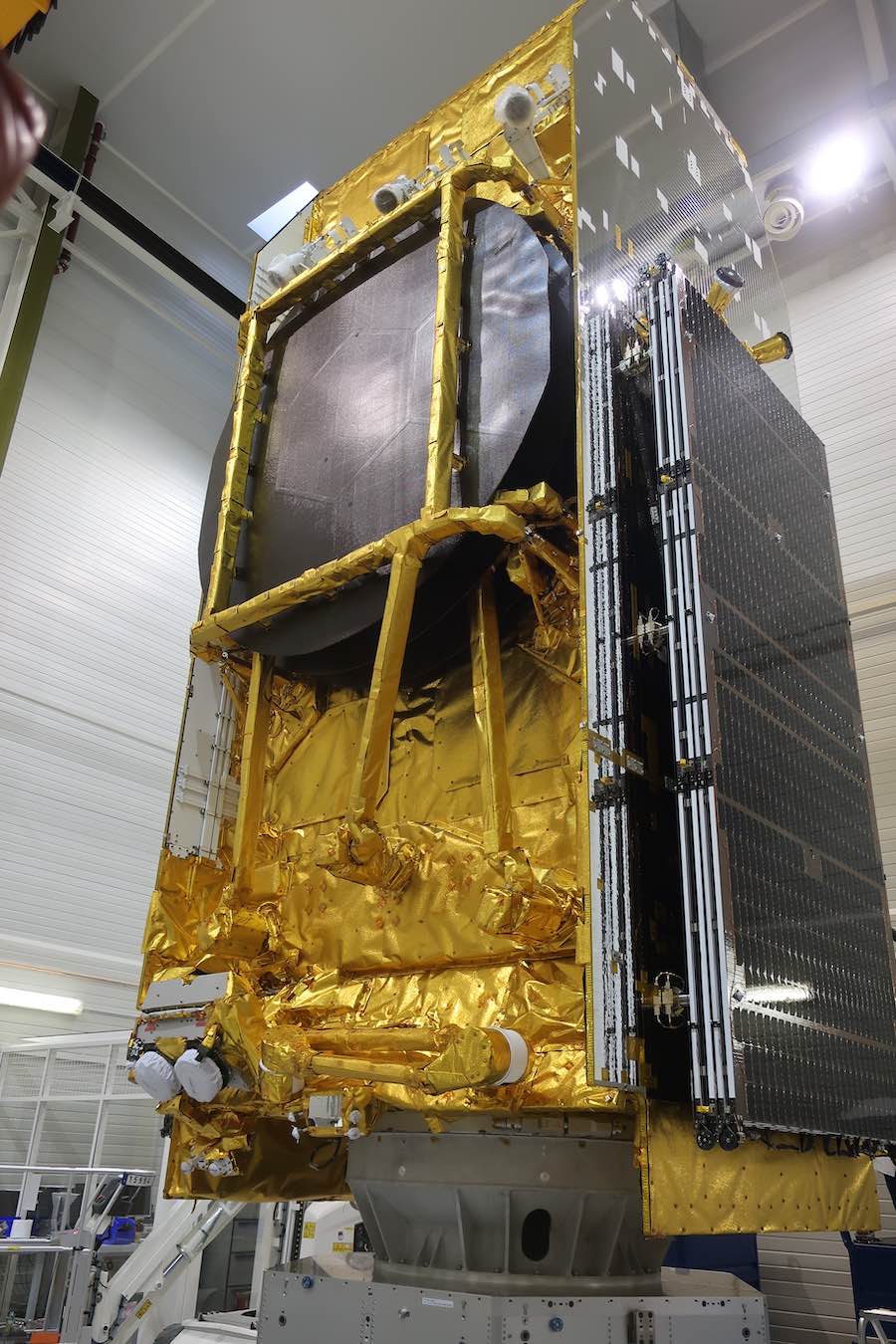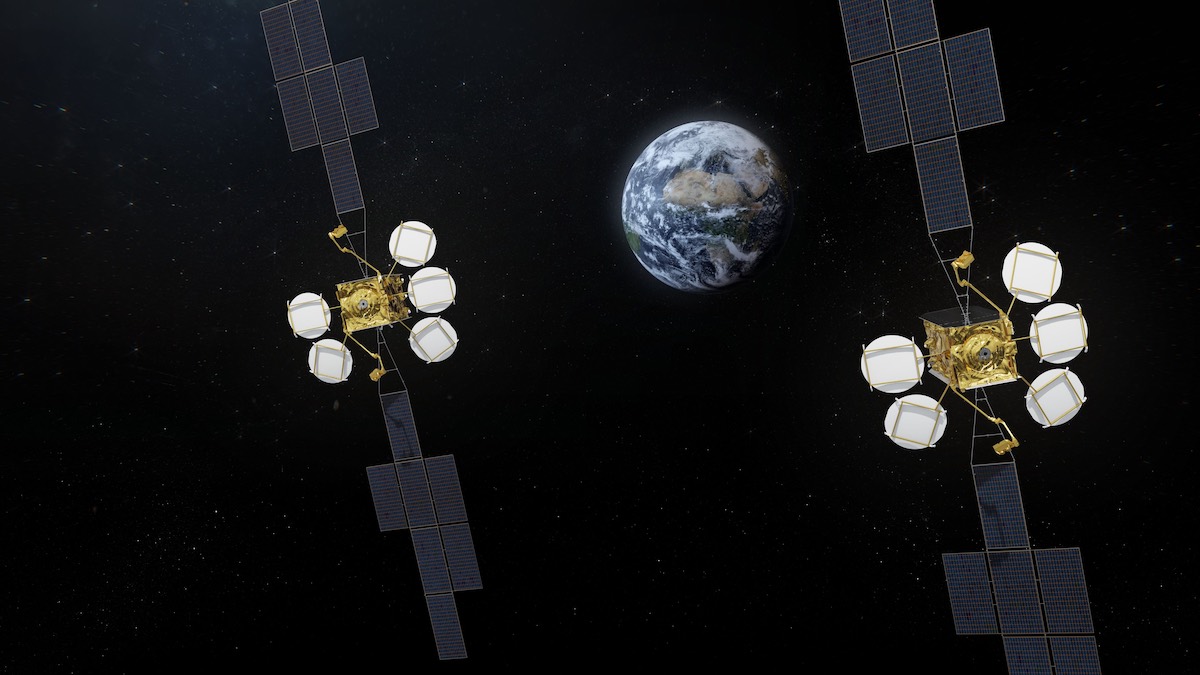Scientists have detected something unusual around a distant quasar — perhaps the first real evidence of a first-generation star.
The post Tentative Evidence of the First Generation of Stars appeared first on Sky & Telescope.
Scientists have detected something unusual around a distant quasar — perhaps the first real evidence of a first-generation star.
The post Tentative Evidence of the First Generation of Stars appeared first on Sky & Telescope.
The Hubble Space Telescope peered into a massive gathering of stars.
A very basic star projector, but one that floods your space with bright, single-color laser dots to add an instant ambience.
Image:
ESA astronaut Samantha Cristoforetti is all smiles after arriving in Cologne, Germany, less than a day after leaving the International Space Station.
Speaking to media, she said, “I'm happy to be back and thankful for this incredible opportunity. I'm looking forward to be with my loved ones now and also to continue the scientific experiments during the post-flight phase."
Samantha and her Expedition 67/68 crew mates NASA astronauts Kjell Lindgren, Bob Hines and Jessica Watkins undocked from the Space Station on 14 October at 18:05 CEST.
After a series of burns, SpaceX’s Crew Dragon Freedom transporting Crew-4 entered Earth’s atmosphere and deployed parachutes for a soft water-landing. They splashed down off the coast of Florida nearly fives hours later, at 22:55 CEST.
The journey wasn’t quite over for Samantha’s ‘direct return’. She boarded a plane from Florida to Cologne, Germany, home of the European Astronaut Centre and the German Aerospace Cetner’s (DLR) :envihab facility where ESA astronauts are monitored after their space residency.
Build your way to Christmas Day with the best Lego advent calendars.
Astronomer Aman Chokshi talks about indulging his passion for astrophotography during a year-long expedition to the South Pole where he's been working as an astronomer maintaining a unique telescope.
NASA engineers are firing micro-bullets at squares of anti-meteoroid shield material that will protect a Mars sample return orbiter during its journey back to Earth.
Leading from the Hunter's Full Moon to the new moon next week, the moon will appear half illuminated during its final quarter phase on Monday, Oct 17.
Asteroid hunters have become increasingly good at their job. The discipline, which took a back seat in the early days of astronomy, has really come into its own as of late. Once the general public, probably spurred on by popular 1990s movies like Deep Impact and Armageddon, realized the potentially existential threat they posed, support for finding all asteroids that could be planet killers skyrocketed. At this point, astronomers think that most planet-killing asteroids have been found and have worked their way down to much smaller but still devastating impactors. And now they’ve reached a new milestone with over 30,000 Near Earth Asteroids (NEAs) officially discovered.
That milestone results from years of steady work identifying and tracking those objects. Better equipment has helped with that task – over 15,000 have been discovered in the last ten years alone. Given that the first NEA was discovered in the 1800s, that is a pretty impressive pickup in pace.
A new crop of improved instruments helps with that. The Catalina Sky Survey (CSS) is the most prolific, having been responsible for approximately 47% of all NEOs discovered. It continues to find a few new asteroids every week, but even so, it has dramatically improved its capabilities in recent years. In 2005, it found 310 new asteroids, whereas, in 2019, it found 1067.
UT video discussing the need to find NEOsWith those sensing capabilities, the CSS has been even more effective at finding smaller asteroids. Scientists are pretty sure they’ve found all the large space rocks that fit the definition of an NEA – i.e., that its orbit takes it at least within 1.3 AU of the Sun. “Large,” in this case, is quantified as a few kilometers in diameter – enough to cause an extinction-level event if it were to hit Earth.
More recently, CSS and its fellow asteroid hunters have been concentrating on smaller rocks on the order of a few hundred meters in diameter. Being much smaller, these are also much harder to detect as they aren’t as bright in the night sky as their larger cousins. While these could still cause significant damage if they were to impact Earth, none appear to be on an immediate collision course – at least for the next 100 years.
In April 2018, NASA launched the Transiting Exoplanet Survey Satellite (TESS), the successor to the Kepler Space Telescope that revolutionized the exoplanet studies field. Like its predecessor, TESS has been scanning almost the entire sky for five years for extrasolar planets using the Transit Method. This consists of monitoring thousands of stars for periodic dips in brightness, which may indicate a planet passing in front of the star relative to the observer. To date, TESS has made 243 confirmed discoveries, with another 4562 candidates – or TESS Objects of Interest (TOI) – awaiting confirmation.
On Monday, October 10th, fans of the TESS mission and the research it conducts got a bit of a scare as the observatory experienced a malfunction and had to be put into safe mode. Three days later, at around 06:30 PM EDT (03:30 PM PDT) on October 13th, NASA announced that their engineers had successfully powered up the instrument and brought it back online. While technicians at NASA are still investigating the cause of the malfunction, the spacecraft is now back in its fine-pointing mode and has resumed its second extended mission (EM2).
For reasons that are still unknown at this time, TESS had to be put into safe mode following a reset of its flight computer. This failsafe suspends science operations and places the telescope into a stable configuration until the mission team can determine the source of the problem. When in safe mode, any information that has not yet been downlinked to mission control will be safely stored aboard the space telescope’s computer for later retrieval.
TESS will survey the sky in a series of thirteen observing segments, each 27-days long. Credit: NASA/MIT
On October 12th, the TESS operations team reported that science data had been safely stored and that it could take several days before the telescope resumed normal operations. A day later, they announced that they had successfully restored power to the telescope and commenced recovery procedures. As of the latest update from NASA (Friday, October 14th), TESS has reportedly resumed normal science operations, and all the science data stored on board will be downlinked at the next available opportunity.

We put the Sony FE 12-24mm f/2.8 G Master ultra-wide zoom lens to the test to see if it's worth the hefty price tag.
Billionaire Elon Musk said SpaceX will keep funding Starlink internet service in Ukraine, backtracking from a previous push to ask the Pentagon to foot the bill.
The asteroid Phaethon's rotational period is decreasing, which is rare for space rocks.
The International Space Station experiment is a small step towards testing this tech for lunar exploration for the Artemis program, proponents say.
Russia launched a small military satellite on Saturday (Oct. 15), pulling off its third orbital mission in less than a week.
Christopher Slayton took on a challenge of galactic scale: to recreate the universe in Minecraft, a game that is usually tailored to creators building on a single world.
NASA's spacecraft Lucy will return to Earth on Sunday (Oct. 16) as part of its 12-year-mission to visit a record number of asteroids, and the event will be available to stream live online.
A deep-space mission is celebrating the first anniversary of its launch from Earth by zipping closer to the planet than the International Space Station's orbit.
See the spectacular photos snapped by China's Shenzhou 14 crew aboard the Tiangong space station.
SpaceX’s Falcon 9 rocket streaks into a moonlit sky over Cape Canaveral in this long exposure photo. Credit: Michael Cain / Spaceflight Now / Coldlife Photography
An Airbus-built communications satellite rocketed into orbit early Saturday from Cape Canaveral on top of a SpaceX Falcon 9 launcher, bound for a high-altitude perch in geostationary orbit to beam hundreds of TV and radio channels to Eutelsat customers across Europe, the Middle East, and North Africa.
SpaceX said it delayed the liftoff until the end of the night’s launch window at 1:22 a.m. EDT (0522 GMT) to allow additional time for data reviews, without providing any additional details.
With the data review complete, SpaceX’s launch team gave a “go” to load super-chilled, densified kerosene and liquid oxygen propellants into the Falcon 9 rocket. The launcher’s on-board computer took command of the countdown in the final minute, then gave the command to light nine Merlin 1D engines to propel the Falcon 9 off of pad 40 at Cape Canaveral Space Force Station.
Heading due east over the Atlantic Ocean, the 229-foot-tall (70-meter) Falcon 9 rocket darted through scattered clouds, trailing an orange flame from its engines as it surpassed the speed of sound. Two-and-a-half minutes after liftoff, the nine main engines cut off and the booster stage jettisoned from the Falcon 9’s upper stage. The second stage engine ignited to continue to climb into space with Eutelsat’s Hotbird 13F communications satellite.
The payload fairing shielding the Hotbird 13F spacecraft during the initial portion of the launch released in a clamshell-like fashion around three-and-a-half minutes into the mission. The two fairing halves descended under parachutes for recovery by a SpaceX boat downrange.



All Rights Reserved. 2024. SpaceZE.com